
Two of the most popular ways coffee enthusiasts love their coffee prepared are Cold Brew and Espresso.
Cold Brew is a bold yet refreshing cold coffee drink that is extremely popular during the warmer summer months and Espresso is a bold and bitter hot coffee drink that can be taken as a shot or used to make other drinks.
Both Cold Brew and Espresso have a high caffeine content that makes them even more attractive to people needing a nice caffeine buzz without wanting to drink cup after cup of regular coffee.
How do Cold Brew vs Espresso differ?
The main characteristics that distinguish Cold brew vs Espresso are how they are prepared and what temperature they are typically served at. There are some exceptions to this as Espresso can be served on ice, but, traditionally, Espresso is served hot.
That being said, let us take a look at how these two extremely popular ways to prepare coffee are made, what makes them different from one another, and some of the delicious ways that you can enjoy them at your local coffee shop or at home.
What is Cold Brew and how is it made
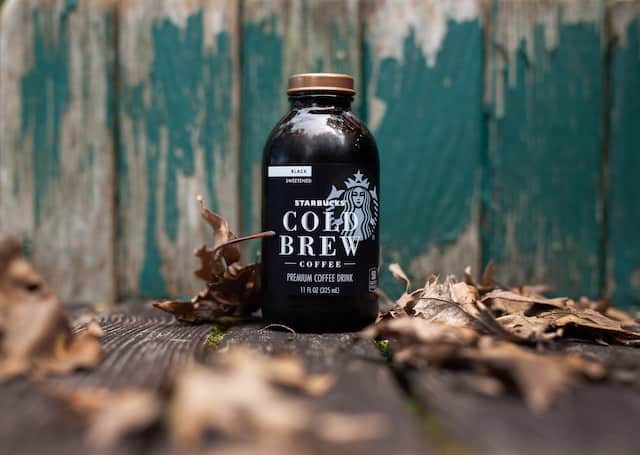
Photo by Joseph Gonzalez
Cold Brew is a coffee drink with a very high coffee-to-water ratio that creates a strong, bold, and highly caffeinated beverage. When you make drip coffee at home or order it from your local coffee shop, the coffee-to-water ratio can be anywhere from 1 part coffee to 16 to 20 parts water. With Cold Brew, the coffee-to-water ratio is closer to 1 part coffee to 4 to 8 parts water.
As you can see, Cold Brew is extremely concentrated with much more flavor and a much higher caffeine content than your typical cup of joe.
Making Cold Brew coffee
One of the things that makes Cold Brew unique is how it is made. Cold Brew coffee is typically made by steeping coffee in water for a long period of time at a cold temperature. The brewing process typically takes place inside a refrigerator or walk-in cooler or it can be done by slow-dripping the brew through an ice tower.
The time it takes to make a proper batch of the best-tasting Cold Brew coffee can be anywhere from 8 to 24 hours. Anything longer than that and the batch can become over-extracted and extremely bitter.
When it comes to water ratio, many coffee shops may use a ratio of 1 part coffee to 8 or 9 parts water. Some shops may do an even more concentrated ratio of 1:4 and some may do something closer to 1:11 or 1:12. It all really depends on what the brewmaster is going for.
Also, some shops that choose to create batches with ratios closer to the 1:4 mark may dilute the Cold Brew by adding cold water before it is served.
Either way, the flavor profile you get with Cold Brew is much more mellow with a lower acidity level than the same grounds going through a hot brew.
What is Espresso and how is it made
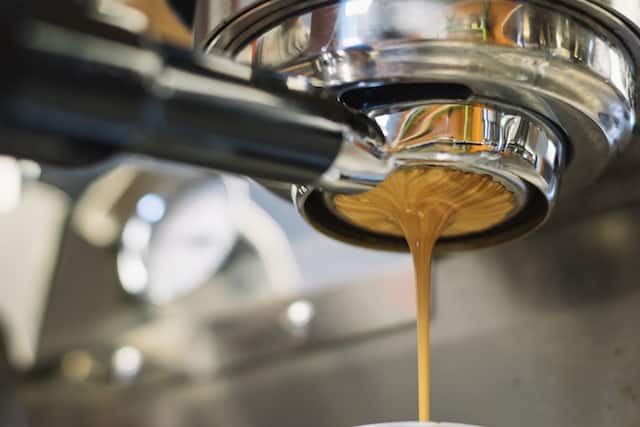
Photo by Blake Verdoorn
Espresso is prepared in a completely different way than Cold Brew. Espresso calls for finely ground dark-roast coffee tightly packed into a puck where highly pressurized and extremely hot water is forced through. The coffee-to-water ratio usually is 1 part coffee to 2 parts water and serving sizes are between 1 and 2 ounces.
The result is an extremely bold and bitter extraction that is often diluted with hot water to make an Americano, or added to steamed milk in various ratios to make drinks like cappuccinos, lattes, mochas, macchiatos, and more.
Cold Brew vs Espresso: Key differences

Photo by Matt Hoffman
When we look at Cold Brew vs Espresso side-by-side, we find a number of key differences other than the extraction method and temperature. There are differences in the levels of acidity, in taste, in the calorie content, and in the amount of caffeine percent per volume.
Let’s take a look at how Cold Brew and Espresso differ in these categories.
- Acidity: Cold Brew has a lower level of acidity than Espresso.
- Taste: Cold Brew is smoother and sweeter tasting whereas Espresso is intense, bitter, and vibrant.
- Calories: By volume, there really is not much difference in the amount of calories of Cold Brew compared to Espresso.
- Caffeine/Strength: Cold Brew has more caffeine than Espresso due to the steeping process that can be anywhere from 8 to 24 hours in length.
Is Cold Brew or Espresso healthier?
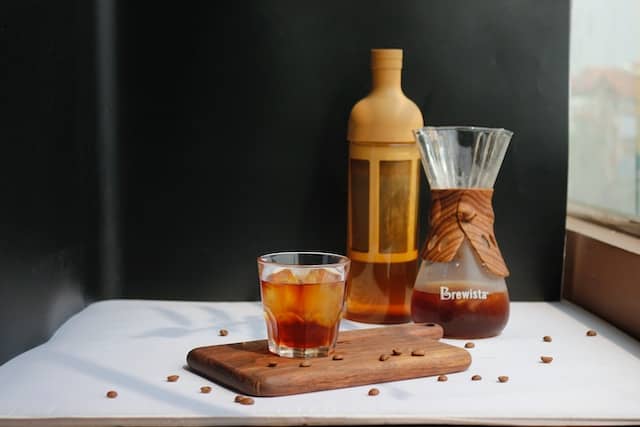
Photo by An Nguyen
The health factors of Cold Brew and Espresso are pretty much the same if no milk, cream, or sugar is added. Both are made only with coffee and water and both contain an insignificant amount of calories. The one factor to consider is because Espresso has a higher level of acidity, it could potentially be more harmful to your teeth.
Best ways to enjoy a Cold Brew and Espresso
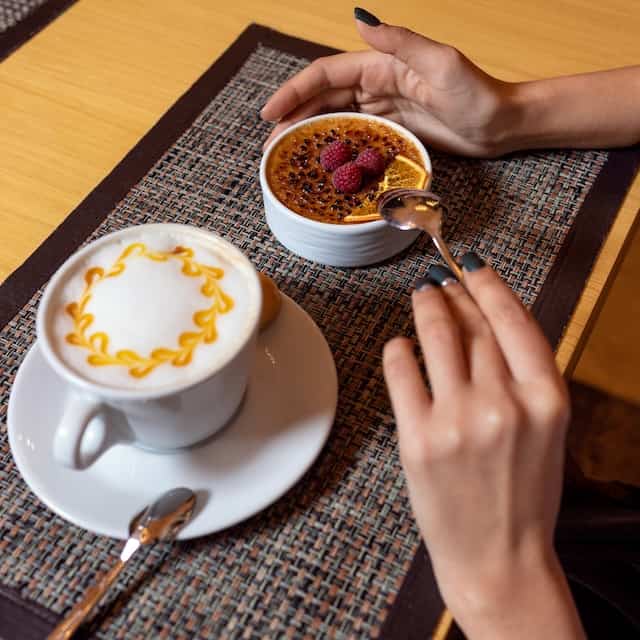
Photo by Farhad Ibrahimzade
There are many great ways to enjoy a Cold Brew or an Espresso. For Cold Brew, you may consider topping the drink with sweet cream cold foam or adding some flavor shots like caramel, coconut, raspberry, or chocolate sauce.
If you are making your own Cold Brew at home, then you may want to consider using flavored coffee beans, mixing in shredded coconut, or adding other spices during the brewing process. You could also add some fruit or your own homemade fruit syrup as well.
If you brew the Cold Brew with no added flavors, then you could stir in some sweetened condensed milk or add flavor shots, cream, and sugar when serving.
When it comes to Espresso, the most common way to enjoy it is by pairing it with steamed and/or frothed milk or cream. Additionally, you can add flavor shots and/or sugar, or even pour it over ice and make an iced espresso with sweet cream and caramel. Yum!
FAQs
Is Nitro Cold Brew or Espresso stronger?
The Nitro Cold Brew is stronger than Espresso because of the longer steeping process which can last anywhere from 8 to 24 hours. Although the coffee-to-water ratio is more concentrated, espresso is considered weaker than Nitro Cold Brew because the extraction process is done within a few seconds.
Coffee Has Never Read This Good!
Sign up for a FREE newsletter to the best home brewing tips and guides
Thank you for subscribing to The Cup Coffee House Crew! There's a surprise in your Inbox 🙂
Something went wrong.
- About the Author
- Latest Posts
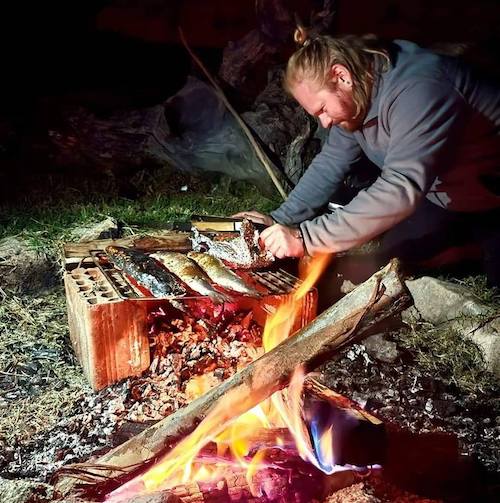
Garret is a content writer who has written thousands of articles on hundreds of subjects, all with the help of his favorite Peruvian blends of coffee grown near his home, a few hours from Machu Picchu. When he’s not sipping his cup of joe or writing content, he enjoys hiking in the mountains, camping with friends, and enjoying a cold beer around a fire beneath a star-lit night.

